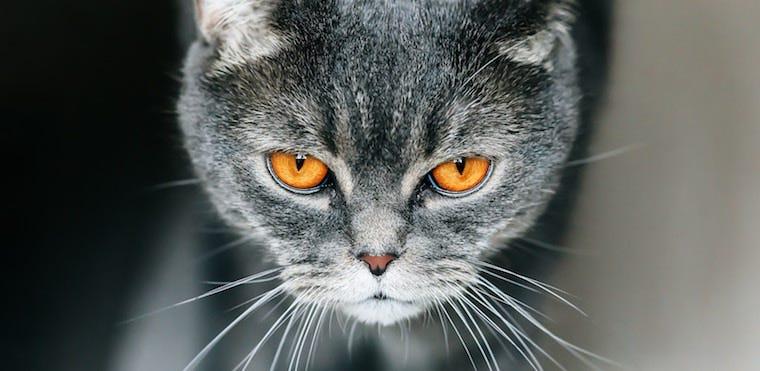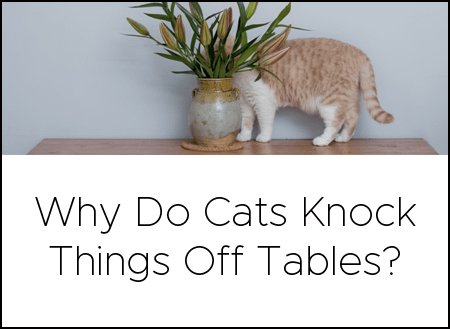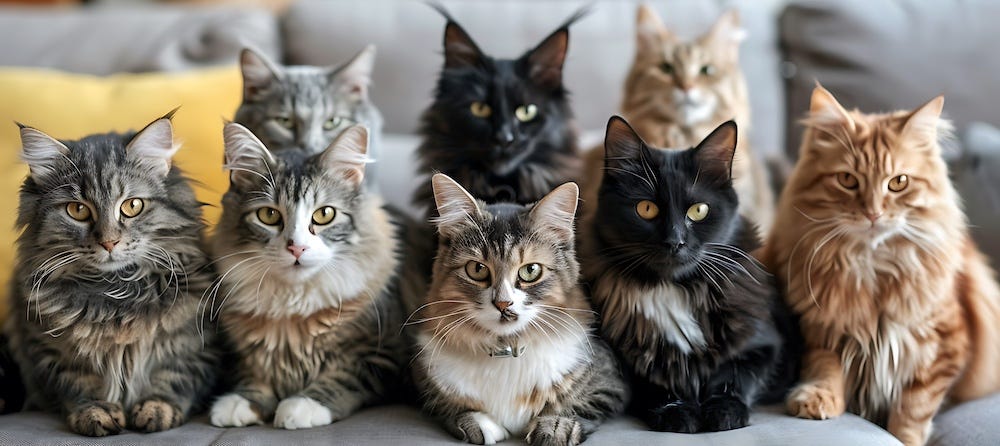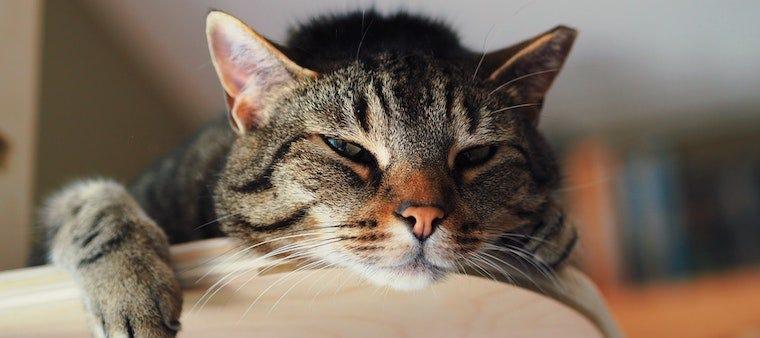Did you know there are glasses for cats? Learn about the purrfectly adorable reason you may have seen cats sporting glasses lately. In reality, cats don’t require spectacles the way humans do. Find out how cat vision compares to human eyesight, and what to do if you think your cat is losing his vision.
Truffles the eye clinic kitty
When it comes to glasses for cats, no one does it better than Truffles. This tuxedo kitty first started making the rounds earlier this year when the children’s optical shop A Child’s Eyes shared images of Truffles sporting her very own eyeglasses.
While most cats wouldn’t put up with wearing glasses, Truffles has helped many children feel more comfortable getting treatment for various visual handicaps. As the honorary eyeglass instructor, she has helped teach kids how to wear their glasses and their eyepatches, as well as how to identify shapes on their eye tests. Hooray, Truffles!
How cat vision differs from human vision

Glasses for cats are great when it comes to inspiring bravery in children. However, cats don’t really need eyeglasses because it is very unlikely for them to be near-sighted or far-sighted like people.
While humans tend to have 20/20 vision (or close to it), cats have approximately 20/100 or 20/200 vision. “This means that if a human can see an image very well from 100 feet, a cat would have to be 20 feet from that same object for it to appear sharp,” says Dr. DJ Haeussler, a southern Ohio veterinary ophthalmologist.
But because cats have more rods (low-light photoreceptors) than humans, they have superior night vision. Dr. Haeussler estimates that cats see 6 to 8 times better in the dark than humans.
Check out these other ways cat vision differs from human vision:
- Cats do not have the muscles to change the shape of their lenses, which prevents them from seeing objects close up.
- Cats have fewer cones than humans, which means they see less vibrant (and fewer) colors.
- Finally, cats are better at seeing fast-moving objects than humans.
How cat eyesight compares to dog eyesight

While dogs have wider peripheral vision than cats, cats have better binocular vision than dogs. This allows cats to judge distance and better track small objects such as mice and birds.
Unlike humans, cats and dogs can see some ultraviolet light. Both animals have lenses that allow a certain amount of UV light to pass through, which also allows them to see so well in low levels of lighting.
Cat vision loss
Something that cats, dogs, and humans all have in common? Vision loss. Unfortunately, cats can experience vision loss and even blindness for a variety of reasons. According to PetMD, the four most common reasons for cat eyesight loss include:
- An inflammation of the middle portion of the eye called uveitis. This is usually caused by an infection from a disease like feline infectious peritonitis (FIP), feline immunodeficiency virus (FIV), or feline leukemia (FeLV)
- Retinal detachment caused by high blood pressure (often associated with hyperthyroidism or kidney disease)
- Cataract formation due to untreated diabetes in cats
- Traumatic eye injuries
What to do if you suspect cat vision loss
Make sure you’re taking your cat to the veterinarian at least once a year—twice if your cat is older than 10 years of age. The sooner your vet can diagnose a disorder affecting your cat’s vision, the better the prognosis for slowing vision loss.
Symptoms associated with cat vision loss or approaching blindness may include:
- Cloudy, discolored, or inflamed eyes
- Large pupils that remain dilated even in bright light
- Startling easily
- Confusion if a piece of furniture has been moved
- Bumping into walls or furniture
- Misjudging heights when jumping
Vision is an essential part of any mammal’s life, but you shouldn’t despair if your cat’s eyesight is failing. Most cats adjust incredibly well to a less visual life. Learn more about adopting a blind cat.
Sources:
Cover photo by Tengy Art on Unsplash









